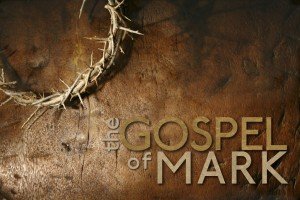In the last installment of this article I introduced the Gospel of Mark, the next chronological piece written for the New Testament (NT). If you have been following this article, you know that seven books, all written by St. Paul and now included in the NT, were written before any of the four Gospels were written. These seven books in chronological order are:
First Thessalonians
Galatians
First Corinthians
Philemon
Philippians
Second Corinthians
Romans
Mark’s story of Jesus is challenging to read as the first gospel – as if the other gospels didn’t exist and this is our first encounter with the story of Jesus. It requires imagining that we haven’t already heard about Jesus from the other gospels, from Christian preaching and teaching and from what is taken for granted about Jesus in Christian and popular culture.
Mark’s story is striking because of what it does include and what it does not include. What does Mark’s Gospel leave out? Mark has no stories of Jesus’ birth or early years. It begins with Jesus as an adult going to a wilderness prophet named John and being baptized by him. Although Mark includes some of Jesus’ teaching, there is much that is not present. In particular, the collection of teachings (about 200 verses) shared by Matthew and Luke from a common manuscript (“Q”), do not appear in Mark – perhaps because Mark knew they had already been put into writing and thus felt no need to include them in his narrative.
The Lord’s Prayer is not in Mark. It is found in different versions in Matthew, Luke and the apostolic document called the Didache, a late first century writing not included in the NT.
Many of Jesus’ best-known parables are not in Mark. Missing are:
The Good Samaritan
The Prodigal Son (Luke
The Unmerciful Servant
The Vineyard Workers
The Sheep and Goats (Matthew)
The Talents and Lost Sheep(Matthew & Luke)
The best-know parables in Mark’s Gospel are:
The Sower and the Seed
The Wicked Vineyard Tenants
Further, Mark does not portray Jesus as publicly proclaiming his identity as Son of God or Messiah. Of course Mark affirms that Jesus is both, but he does not present the titles as part of the message of Jesus Himself. Something which makes much more sense. Two affirmations of Jesus’ exceptional status are cast in private settings and not a part of Jesus’ public teaching. According to Mark, Jesus is Messiah and Son of God but this was a secret during Jesus’ lifetime, known as the Messianic Secret.

